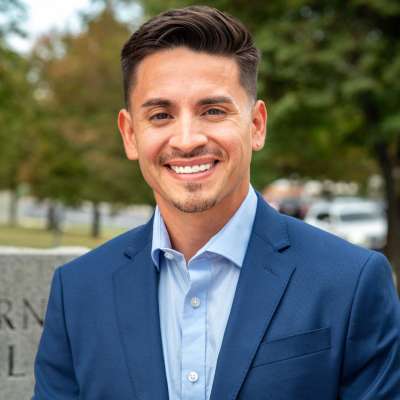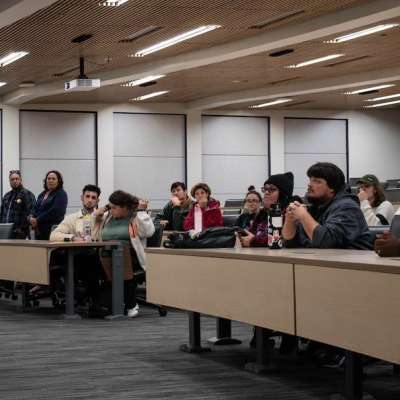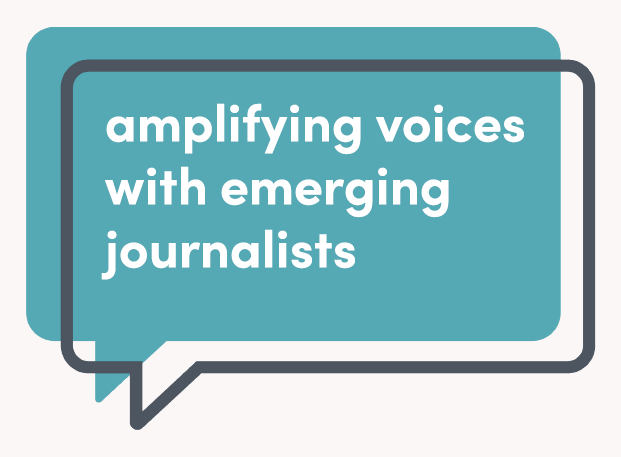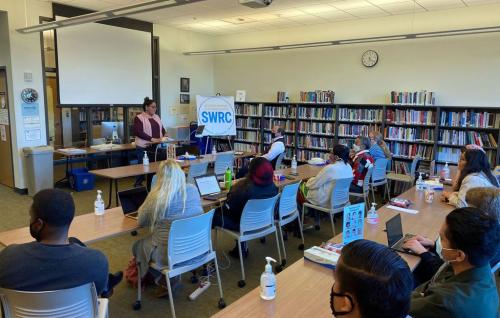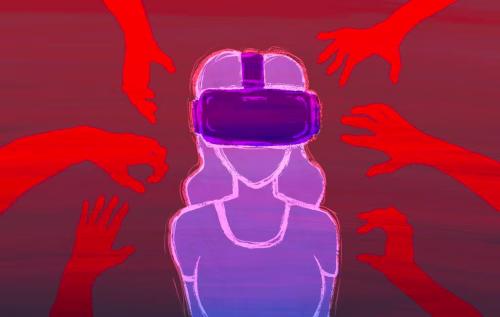Editor’s note • This article discusses rape and sexual assault, as well as domestic violence. To report a sexual assault, or to speak to someone about sexual assault, help is available 24 hours a day at the National Sexual Assault Hotline, 1-800-656-4673, or visit the Utah Domestic Violence Coalition’s website at udvc.org.
Virtual reality games can allow people to play in a simulation of real life — and, like in real life, bad and even harmful things can happen.
A recent case in the United Kingdom, in which a girl under 16 reported being sexually assaulted in a VR game and suffering “psychological trauma,” has prompted a discourse about virtual sexual assault.
“Games feel real to the people who play them,” said Ashley Guajardo, associate professor in the University of Utah’s games department.
It’s possible, Guajardo wrote in her 2015 book “Sexuality in Role-Playing Games,” for game players to separate their playing selves from their everyday lives and morals.
“Players are distanced, but not removed completely, from their own primary frameworks that dictate the normative sexual ethics that affect their everyday lives and sense of self,” Guajardo wrote.
The questions that gaming experts and law enforcement are grappling to answer: Is sexual assault in VR real? Should people who commit such assaults face repercussions in the real world? Is this the start of a new wave of sexual violence? And how should authorities handle these types of cyber crimes?
How ‘real’ is ‘virtual’ rape?
Virtual realities and simulation games go back half a century. One of the first virtual spaces, “Maze War,” was created in 1973. Popular games and platforms like “Second Life,” “Virtuality” and “Meta Quest” followed this release to grow the virtual world.
Earlier versions of video games, Guajardo said, engaged with different sensory experiences, which has been extended to VR.
“In the ‘80s, you’re using your ears, you’re listening to what other people are saying … in the ‘90s, you’re using your eyes, you’re reading the text on the screen,” Guajardo said. “In contemporary times, you’re using your eyes to see in the VR environment, you’re using your ears to hear in the VR environment.”
Not only does VR use a combination of senses, but it can also use actual touch. Guajardo points to the example of “haptic vests,” or suits that simulate physical feelings — like gunshots, energy, explosions and recoils — in the game.
Guajardo connects the experience of being in VR to a metaphor used by digital humanities academic Janet Murray, who compared being in a game to being underwater.
“Your eyes, you see water. Your skin, you feel water. Your ears, your sound is distorted because you’re in water. All of your senses are completely immersed by water, " Guajardo said. “That is the sensation that people feel when they’re in a video game.”
Video game manufacturers, Guajardo said, frequently use a game’s hyperrealism as a selling point. Even with educational games, Guajardo said, the player is “so immersed … so close to real life.”
Players can learn things from playing the game, but the hyperrealism that leads to good experiences can also create potentially harmful ones.
“The virtual worlds we’re interacting with can be as real as our ordinary physical world,” David Chalmers, a professor of philosophy and neural science at New York University, told The Guardian in 2022. “Virtual reality is genuine reality.”
If a player experiences negative events in a gaming space, they are likely to process it the same way they would a negative event in real life. Psychology Today, in a 2023 article, said these hyperrealistic games have more “damaging consequences” than traditional games. Some studies suggest that the brain cannot differentiate between real and imaginary threats and experiences.
“The exact same stress response kicks in when you imagine danger, also producing cortisol and [adrenaline] and pushing blood around the body,” David Hamilton, an author and scientist, wrote in 2014. “The same chemistry is produced regardless of whether the danger is real or imagined.”
Guo Freeman, a professor at Clemson and director of the Gaming and Mediated Experience Lab, wrote in 2022 how “virtual reality’s focus on creating a simulated immersive experience may cause harassing behaviors to feel more realistic, and therefore potentially more traumatic.”
Psychology Today noted that “trauma resulting from virtual sexual assault does not dissipate once a user removes his or her goggles.” To victims of online sex crimes, the events may feel entirely real to them — and their brains might process them as such.
The psychology of sexual violence in video games
Literature suggests that it is not video games that make players violent, but instead a phenomenon known as the online disinhibition effect.
Writer Aditya Shukla, on his website Cognition Today, wrote in 2023 about how anonymous spaces online create a dissociation from reality. Once separated from reality, a player is also separated from “morals, ethics, and norms” that exist in real life. Online spaces allow for a “lack of eye contact, facial expressions, body language, movement, etc.” that erases the feeling of guilt or shame from engaging in negative behaviors, Shukla wrote.
Guajardo pointed to how this lack of eye contact makes people feel more willing to commit crimes, as they are not directly face-to-face with the victim.
“The more violent aspects of ourselves may come out, because there’s an idea that online spaces are not regulated. There’s a faceless victim,” Guajardo said. “The idea to commit the crime in the first place does not start with the game. That comes from the individual.”
Because of the distance games provide between one’s online behavior and real-world sense of self, as Guajardo wrote in her book, players are free to “experiment with activities that would be considered in conflict” with their usual selves. They create distance from their actions in a game with defenses like “it was only a game.”
In her book, Guajardo cited Gary Alan Fine’s foundational 2002 text “Shared Fantasy: Role-Playing Games as Social Words,” which describes players sometimes engaging in “sexual violence.”
“‘Frequently … female non-player characters [are] raped for sport,’” according to Fine.
For example, the 2018 game “Super Seducer” follows a male protagonist attempting to seduce female non-player characters (NPC) he meets for the first time. Screen grabs show how the player is given choices of what to do to these women; many options involve sexual harassment, such as “look up her shirt” or relating the conversation to “the business between her legs”.
Emily May, founder of the anti-harassment nonprofit “Hollaback!”, told Vice in 2018 that “gender-based violence is on a spectrum — and it starts with games like this. … These games create a culture where violence against women is OK, and in turn, it becomes more OK, and the world becomes less safe for everyone.”
Other games — with titles like “Phantasmagoria,” “RapeLay,” “Hotline Miami 2: Wrong Number” and “Rape Day” — feature rape scenes of female characters.
And it’s not just indie games — the best-selling “Grand Theft Auto” series is notorious for its depictions of violence against NPCs. In 2014, one modification of the game allowed players to enter another player’s game as an undressed man, and appear to rape another character. “There is no way to prevent or stop an attack,” according to The Conversation. Such scenes often were recorded and uploaded to YouTube for other gamers to see. (According to HuffPost, YouTube later removed such videos, citing its policy against depictions of sexual violence.)
Guajardo said people may use games as a utopian escape. By immersing oneself in an artificial reality, a player can escape the horrors they face in real life. For women, specifically, they can escape sexism and experience virtual equality.
“If I am running [in a virtual world], I have no more chance of getting attacked by a monster than does a man,” Guajardo said. “This is literally an equal playing field.”
Guajardo expressed her disappointment that the dangers and threats of the real world now exist in VR — noting that, now, there is “no escape” when virtual spaces are permeated with real-life issues.
“To hear that now the virtual world is also a place where being female or inhabiting a female form attracts violence is really depressing,” Guajardo said.
Preparing for cyber sexual assault
Concerns over sexual violence in the virtual world include the question: What can the justice system do?
As yet, the University of Utah has not dealt with a case of virtual sexual violence. Both the university’s Office of Equal Opportunity and University of Utah Police said they have not received any reports of cyber sexual assault.
If campus police were to get such a report, Capt. Brian Lohrke said, “the first thing is we really want to listen to the victim of the crime, and make sure they have the proper resources to deal with it.”
Lohrke said campus police rely on the department’s crime victim advocate to “make sure that the [victim] gets connected with the right resources” before fully delving into the investigation of the crime.
Investigating a cyber sexual assault could be challenging to law enforcement, Lohrke said.
“It’s not a physical attack, not a physical rape, so it may not meet our state statutes,” Lohrke said.
Utah’s statutes for sexual crime — which the Rape, Abuse & Incest National Network (RAINN) have compiled in a database — define rape as when someone “has sexual intercourse with another person without the victim’s consent.” Utah’s statutes do not include guidelines for when this occurs in an online, nonphysical space.
If police can determine that a rape or other illegal sexual activity happened, there’s the issue of whether police have jurisdiction to make an arrest. For example, the U. Police are state officers, so their jurisdiction is limited to the state of Utah.
“That is one thing in this cyber world that we really struggle with,” Lohrke said, “because some of the perpetrators are not local.”
If a perpetrator was out of state, an investigation could be handled by federal authorities — of, if the perpetrator was outside the United States, the investigation could also go international.
For a situation on campus, U. Police would reach out to the Office of Equal Opportunity — which would treat virtual sexual harassment the same as physical harassment, said the office’s interim director, Jess Morrison.
“OEO would address reports of online sexual harassment or assault,” Morrison said in a written statement. “Title IX does not create a distinction between sexual harassment occurring in person [versus] online, and the University would promptly respond to the report of exclusively online harassment.”
If the perpetrator was a fellow U student, they would face consequences from the U, Morrison said, citing University Policy 1-012 on nondiscrimination. “That student would be subject to sanctions even if the conduct consisted of exclusively online harassment,” Morrison said.
Even though the issue is new, faculty and staff at the U continue to offer support and advocate for victims of cyber rape and assault.
Guajardo said her “heart goes out to the victim” of the U.K. virtual assault, an event she called “incredibly disheartening.” She said she “absolutely” believes victims of virtual sexual violence deserve justice.
Lohrke said online sexual assault cases are “traumatizing,” and the goal of public safety, first and foremost, is to help the victims. “If anybody has experiences or anything, come to us,” Lohrke said. “Let’s have a conversation about what we can do.”
Lohrke suggested people seeking resources for victims of cyber crimes go to the Internet Crime Complaint Center, at ic3.gov. The website offers links to reporting cyber crimes, as well as information to educate the public on protecting themselves from future internet crimes.
“At least pick up the phone and give us a call. 24/7, our officers are always willing and able to talk,” Lohrke said. University police can be reached at 801-585-COPS (2677), or through their website, police.utah.edu.
Caroline Krum wrote this story as a student at the University of Utah and an investigative writer for The Daily Utah Chronicle. It is published as part of a collaborative including nonprofits Amplify Utah and The Salt Lake Tribune.
###
NOTE TO MEDIA PARTNERS PUBLISHING WORK
We also request organizations include the following text either at the beginning or end of the story text :This story is jointly published by nonprofits Amplify Utah and [Your Media Organization's Name] to elevate diverse perspectives in local media through emerging journalism. Caroline Krum wrote this story as a journalism student at the University of Utah. For more stories from Amplify Utah, visit amplifyutah.org/use-our-work.








